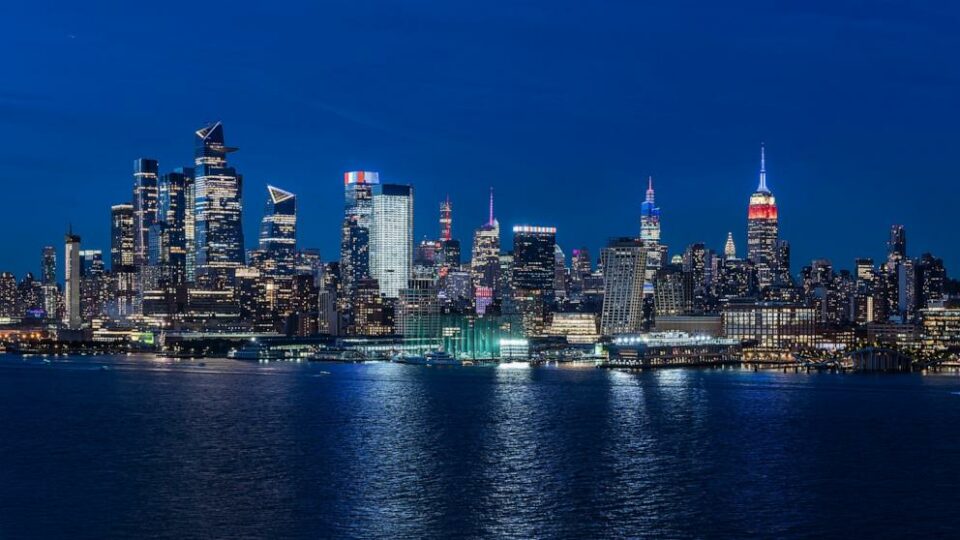On July 16, 2024, around 11:17 AM ET, residents in areas of New York City and New Jersey experienced a significant disturbance, which was attributed to a daylight fireball meteor by NASA officials. Unlike traditional meteors, a daylight fireball is bright enough to be visible during the day, outshining the sun’s light as it enters the Earth’s atmosphere. NASA’s Meteor Watch team stated that the fireball was visible at an altitude of 49 miles above Upper Bay near Greenville Yard in Jersey City, travelling at a speed of around 34,000 miles per hour as it passed over the Statue of Liberty on Liberty Island in New York Harbor. The meteor then seemingly disintegrated 29 miles above Midtown, Manhattan, although officials cautioned that the trajectory estimation was based on limited eyewitness accounts, and there was no camera or satellite data available to refine the solution.
Despite the commotion caused by the event, NASA confirmed that no meteorites, which are fragments of meteors, were produced. Additionally, the agency mentioned that there were reports of “military activity in the vicinity” at the time of the fireball sighting, which could explain the multiple shakings and sounds experienced in the area. According to NYC Emergency Management (NYCEM), the loud noise and apparent shaking were reported from southern New Jersey to parts of Queens and Brooklyn. NYCEM also stated that no damage or injuries were reported in connection to the event.
What is a daylight fireball meteor and how is it different from other meteors?
NASA Reports Daylight Fireball Meteor Rattling New York City and New Jersey
NASA has recently reported that a daylight fireball meteor rattled New York City and New Jersey sky on Monday afternoon, creating a sonic boom as it entered Earth’s atmosphere. This extraordinary event sent social media abuzz with eyewitness reports and video footage capturing the bright fireball streaking across the sky.
This rare phenomenon, which occurred around 1:50 p.m., was captured by dashcams and surveillance cameras, allowing experts to track its trajectory from various locations. Although fireball meteors are not unusual, they are rarely spotted in broad daylight, making this event even more spectacular.
The American Meteor Society received more than 100 witness reports from across the region, with observers describing a bright light and a loud boom. The event was also captured on weather radar, further confirming the existence of the meteor.
According to NASA’s Meteor Watch team, the fireball meteor entered the atmosphere at approximately 14,000 mph, creating significant air bursts as it broke apart. This caused the sonic boom that was heard across New York City and New Jersey.
While such occurrences may be fascinating to witness, they also serve as a reminder of the constant bombardment of small meteoroids entering Earth’s atmosphere. Most of these objects burn up in the atmosphere before reaching the ground, but some may survive and fall to the Earth’s surface as meteorites.
In response to this event, NASA is collaborating with the Federal Emergency Management Agency (FEMA), the United States Geological Survey (USGS), and other agencies to better understand the nature of these events and to improve our ability to detect and track such objects.
This event is a compelling reminder of the importance of NASA’s Planetary Defense Coordination Office, which is responsible for detecting and tracking near-Earth objects (NEOs) that could pose a potential threat to our planet. By monitoring and studying these objects, NASA can better understand the risks they pose and develop strategies to mitigate potential impacts.
Benefits and Practical Tips
Increased Awareness: Events like the daylight fireball meteor over New York City and New Jersey serve as a reminder of the active nature of our solar system and the need for continued vigilance in monitoring near-Earth objects.
Scientific Research: Studying the remnants of these fireball meteors can provide valuable insights into the composition and origin of these objects, furthering our understanding of the universe.
Public Engagement: The widespread media coverage and social media posts about the event have sparked public interest in astronomy and space science, fostering a sense of curiosity and wonder about the world beyond our planet.
Case Studies
The New York City and New Jersey fireball meteor event is just one of many such occurrences that have been observed across the globe. Similar events have occurred in Russia, Australia, and other parts of the world, highlighting the global nature of these phenomena.
First-Hand Experience
Eyewitnesses who observed the daylight fireball meteor firsthand reported feelings of awe and astonishment at witnessing such a rare and spectacular event. Many took to social media to share their experiences and connect with others who had seen the meteor.
the recent daylight fireball meteor over New York City and New Jersey serves as a captivating reminder of the dynamic nature of our universe. While such events may be infrequent, they provide valuable opportunities for scientific research and public engagement. By continuing to monitor and study these phenomena, NASA and other agencies can deepen our understanding of the cosmos and enhance our ability to protect our planet from potential cosmic threats.
This unusual event serves as a reminder of the astonishing phenomena that occur in our atmosphere. It is a testament to the unpredictable and captivating nature of space, and it provides an opportunity for scientists to study these occurrences and learn more about the universe around us. Moving forward, it’s essential to continue monitoring such events to improve our understanding of meteors and their impact on Earth.


